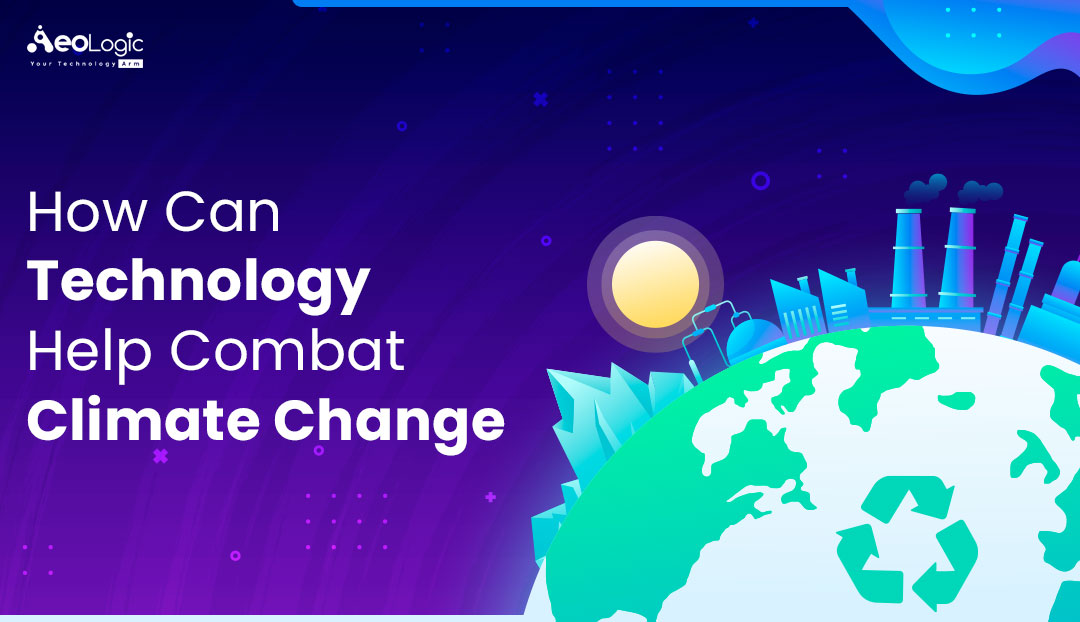Climate change is making weather more and more unpredictable. We can’t control mother nature, but we can use technology to help to understand her moods. The stakes are high. We have burgeoning population growth, we have a climate as we’ve never seen before, and if we’re unable to solve some major challenges, then, quite literally, all the spices across the globe will see its disastrous effects.
A Brief About Climate Change
Climate change is the observed increase in global temperature that we’ve observed over time. And if we look at the curve of the past hundred years or so, we can see easily calculate that we are on a track to hit a 1.5-degree Celsius increase in temperature by 2040. Not to mention, this is not so far away. And while 1.5-degree Celsius may not seem like a lot of change, we know that this is going to lead to more extreme events like hurricanes, tornadoes, floods, etc.
So, this problem needs to be addressed urgently. The reason we are seeing the increase in global temperatures is due to rising greenhouse gases, primarily carbon dioxide.
This problem can be solved in two ways, we can either mitigate it which means that we stop it before it happens, or we can adapt which means we deal with it once it is here.
How To Use Technology To Combat Climate Change?
We’re on the brink of a transformation in the way science is done. Not only tackling the problem of climate change and trying to find solutions, in fact trying to understand the system itself. We need to develop new materials and new chemistries that can help to solve climate change and stop it from happening. Following are a couple of ways we can do this:
1) Low Carbon Technologies
These technologies include things like green chemistry that can be synthesized with lower carbon emissions and produced things that are more environmentally friendly. It also includes things that operate with fewer energy requirements. So, if you think of something that’s more aerodynamic, it’s going to require less fuel, which means fewer carbon emissions.
2) Energy Storage
These are batteries that are very critical for enabling renewable energy, which is an essential part of how we’re going to address climate change.
3) Carbon Capture, Utilization, And Storage Technologies
In this, there are materials that act a bit like a sponge or membrane that separate out Co2 from either the atmosphere or point sources like power plants. Once it is done then the utilization and storage part started that is once we have the carbon dioxide in hand we can either convert it into things that are useful, like drugs and new materials, or we can store it underground to turn it into rocks, and it’s stable for millions of years.
So some of the technological advances that we might be able to use to combat climate change, involve the ability to generate energy in sustainable ways.
The Challenges These Technologies Have
These technologies exist today in some capacity, but they’ve been limited by a couple of different challenges, and they can even break down in a couple of key areas.
- Performance
If you have a material like solvent or a solid observer for carbon capture, usually it is required to heat it up or pressurize it to release Co2 so that it can be used further. To do so require fuel and energy, and it means that you’re actually emitting some carbon dioxide while capturing it. Thus, we need to minimize these energy penalties as much as possible. Hence, there’s a lot of room for improvement today. - Increase In Toxicity
Many of the materials that go into batteries today are very toxic to the environment. So while solving one problem and helping to address renewable energy, we are creating other problems as well in the system. - Stability
Many of these materials break down quickly over time, and ultimately this all leads to an increase in cost. And in order to drive large amounts of adoption of these technologies, we need to bring costs down.
And at its core, all of these things can be addressed by designing new materials and new processes.
To solve overcome these challenges traditionally will be very complex and will cost large expenditure. Now the questions arise about how to overcome these challenges. And the answer to this is by implementing advanced technologies. We have picked up one of many advanced technologies for this blog: artificial intelligence (AI).
The Use Of AI In Combat Climate Change
Following are the ways artificial intelligence (AI) can be used to address various problems of climate change:
1) We can use techniques like natural language processing to ingest thousands of journal articles, which are generally a foundation of our scientific knowledge. Start to link entities, so we can link materials and different properties in their performance metrics and build knowledge graphs.
2) Query technologies can also be used to start to ask interesting questions like what is the best solvent performing solvent on the market today? With this, all the other candidates that get linked up with those entities’ recognitions help to give light to those materials nobody’s really looked at before.
AI will simplify the management of tons of data regarding various materials, solutions, and challenges to combat climate change. This intersection of data will help scientists enormously in making optimum decisions.
Conclusion
To sum up, it can be said that taking the help of technology to combat climate change is a very profound step towards a better future for all the species around the globe. To address all the dynamics of this topic in one blog wouldn’t be possible, hence we have just discussed the tip of the iceberg. Soon more blogs regarding the same will be published on our website, so stay tuned.
Are you looking to implement technologies to combat climate change? If yes, so, please feel free to contact us at support@aeologic.com





